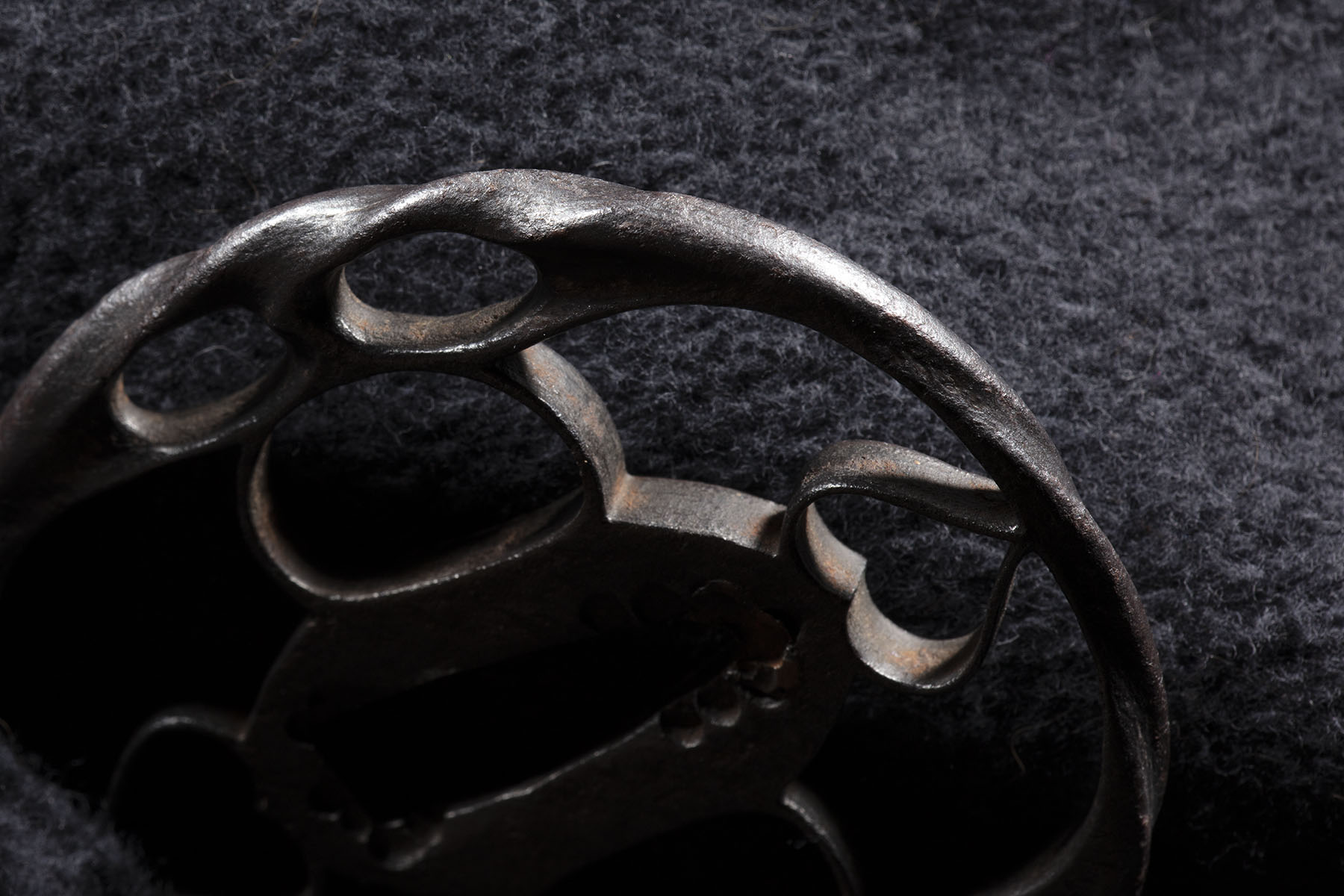Godai Akasaka Tadatoki Tsuba
NBTHK Tokubetsu Hozon
The Akasaka (赤å‚) area exists to this day as a residential and commercial area in the Minato ward of Tokyo. It lies in hilly area southwest of where Edo castle lay, and closest to it the Akasaka-mitsuke (Akasaka Guard Post) protected that zone of Edo castle. While there are several theories as to the origins of its name, a recurrent explanation is that it alluded to the Common Madder Plant that grew in the area. Madder plant roots were used to produce a red (in Japanese “aka†赤) dye, and thus the name “red slope”, or Akasaka evolved.
Thus, the Akasaka school assumed the name of the area when the first master of the school, Shozaemon Tadamasa settled there in the early 17th century, and through his effort, it became noted as a place where high quality sukashi tsuba were made for several generations. Tadamasa was a former student of the famed Higo tsuba maker, Hayashi Matashichi. The fifth generation (godai), was named Hikojuro Tadatoki, and is sometimes referred to as “Nakahiko” (“naka” means “in between”) as he succeeded the Hikojuro name from the fourth generation (who was nicknamed “Oyahiko” or “parent hiko”), and that name became hereditary for every subsequent generation up to the ninth.
The style and workmanship of this tsuba was identifiable as the product of the fifth generation Tadatoki as it is noted specifically on its Tokubetsu Hozon paper. There is a great cumulative number of extant Akasaka tsuba, most mumei, and many having either been made in times the generations briefly overlapped, or were produced completely or in part from the many other students of the school working under each successive master, so having a clear attribution to a specific generation is quite beneficial. Additionally, to have that pinpoint attribution elevated to Tokubetsu Hozon, which is a more difficult tier to achieve in fittings vs. swords, provides further merit to the quality and character of this guard.
This tsuba is a pleasure to hold and admire. The iron has a deep, rich tone, and lustrous, satiny sheen. The composition of inome (boar’s eyes) and oversized hitsu placed in opposition at across the seppadai are joined with a superbly sculpted rim with twists and junctures that echo some form of random natural growth. At first glance, the design approximates a marriage of Owari and Higo styles. The seppa dai is distinctly ovate with more acute roundness at the top than at the bottom.
It is an inviting guard with excellent forging features and fine nodular tekkotsu to enjoy. The forging can be viewed throughout its rim, and is boldly visible in the cross sections of the sukashi. It is strong in appearance, yet delicate and light weighted in hand.
- Dimensions: 7.45 cm x 7.14 cm x 5 mm
It is accompanied by an NBTHK Tokubetsu Hozon Tosogu certificate, and held in a nice box. It is a lovely tsuba, a superb speciment from the school in excellent condition, and would hold a proud place in a collection.
SOLD








